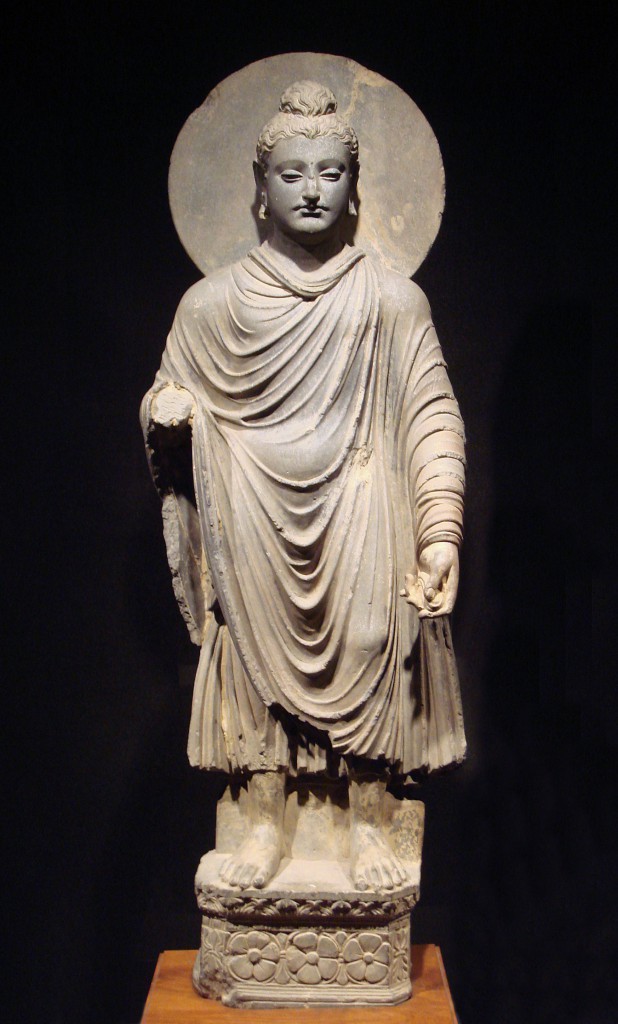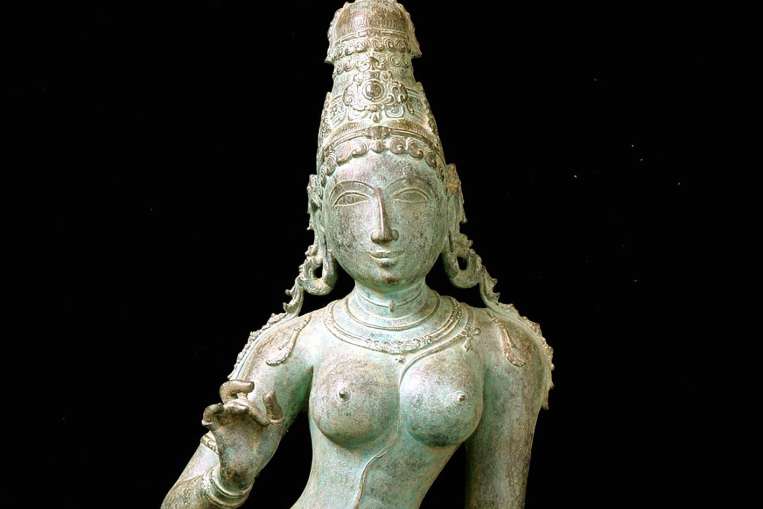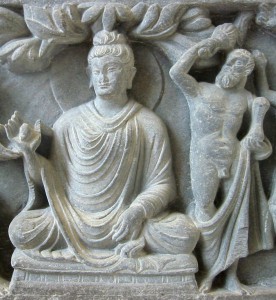What was your favorite object from today’s visit to the Asian Civilizations Museum?
This sculpture is my favourite object from the visit to the Asian Civilizations Museum (ACM). It’s interesting to witness an unconventional depiction of Buddha or a bodhisattva. Sure it has recognizably Asian features such as the arched eyebrows, slanted eyes, and mouth. The figure looks like a fierce ancient Chinese warrior. Yet the mustache, beard and stylized Mediterranean curly hair portray Hellenistic influences. The elaborate crown on the figure’s head allows for interpretation of the Buddha as a Greek king. This could be one of the many representations of Siddhartha as a princely jeweled figure prior to his renunciation of the palace life.
Early Buddhism and Buddhist art represent Buddha through symbolism (remember: aniconism). Buddha is usually represented through symbols such as the stupa, empty throne, footprints, parasols, wheel, Bodhi tree, etc. Some scholars suggest that the first anthropomorphic representation of Buddha is a result of Greco-Buddhist interaction, probably in Gandhara. Look at this… Familiar isn’t it? The wavy hair tied into the typical Buddha top-knot, the Greek himation (toga covering both shoulders), the halo, and contrapposto stance of the upright figure, and also the realism of the sculpture.

Another interesting historical and artistic aspect is the suggestion that the Greco-Bactrian king Demetrius I may have been the prototype for the image of Buddha. The earliest Hellenistic statues of Buddha portray him in a style reminiscent of a king. A characteristic associated to both Buddha and Demetrius is that they share the same protector deity. Vajrapani is the protector and guide of Gautama Buddha. In Gandharan art, we can see the Buddha being protected by the Greek god Heracles (similar to the back of Demetrius’ coins that portray the king protected by Heracles). The Greek hero Heracles is adopted to represent Vajrapani.
Edit / 20th October 2015: Something interesting! Just read a news update on ACM tonight.
ST’s headline: Asian Civilisations Museum to return ‘ stolen’ 11th-century artefact to India (link).

Citation:
Dehejia, Vidya. “Buddhism and Buddhist Art”. In Heilbrunn Timeline of Art History. New York: The Metropolitan Museum of Art, 2000–.
Sanujit. “Cultural links between India and the Greco-Roman World”. Ancient History Encyclopedia. 2011. Web. http://www.ancient.eu/article/208/


